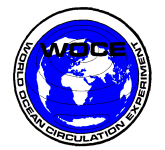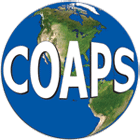



The NOGAPS model, developed by the Naval Research Laboratory (NRL) and documented in detail by Hogan and Rosmond (1991) and Rosmond (1992), is a state-of-the-art global spectral numerical weather prediction model.
Since June of 1994, it has been run operationally at FNMOC in a T159L18 configuration, which implies horizontal resolution of approximately 80 km with 18 levels between the surface and 10 mb height (yielding typically 5 levels below 850 mb).
The model includes sophisticated data assimilation via the multi-variate optimum interpolation approach described by Goerss and Phoebus (1992). The model assimilates all the usual data ingested by other operational numerical weather prediction models in use throughout the world, including data from ships, moored and drifting buoys, and satellites. Wind speed observations over the ocean from the Special Sensor Microwave/Imager (SSM/I) instrument aboard the Defense Meteorological Satellite Program (DMSP) polar orbiters provide a particularly important source of wind information.
In addition, effective since mid December 1997, NOGAPS has assimilated wind speed and direction data from the ERS-2 scatterometer. NOGAPS employs the planetary boundary layer formulation of Louis et al. (1982) to calculate surface winds and wind stresses.
Goerss, J.S., and P.A. Phoebus, 1992: The Navy's operational atmospheric analysis. Weather and Forecasting, 7, 232-249.
Hogan, T.F., and T.E. Rosmond, 1991: The description of the Navy Operational Global Atmospheric System's spectral forecast model.
Monthly Weather Review, 119, 1786-1815. Louis, J.F., M. Tiedtke, and J.F. Geleyn, 1982: A short history of the operational PBL parameterization at ECMWF. Proceedings of the Workshop on Planetary Boundary Parameterization, European Centre for Medium-Range Weather Forecasts, Shinfield Park, Reading RG2 9AX, UK, pp. 59-79.
Rosmond, T.E., 1992: The design and testing of the Navy Operational Global Atmospheric Prediction System. Weather and Forecasting, 7, 262-272.
Last Modified: Wed, 25 Mar 1998